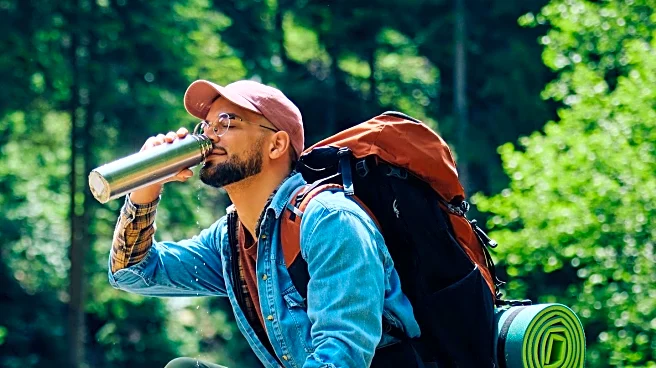What is the story about?
What's Happening?
SABRE Frontiersman has introduced a bear spray designed to maximize safety for outdoor enthusiasts. The spray features a 2.0% Major Capsaicinoids formula, the strongest allowed by law, ensuring maximum stopping power. It is equipped with a belt holster for quick and silent access, eliminating the need for cumbersome straps or Velcro closures that could disturb a bear. The spray has a range of 30 feet, which is 50% further than other bear sprays, providing a greater protective barrier. This product is field-tested and proven effective against all types of bears, backed by SABRE's in-house HPLC lab and approved by Health Canada.
Why It's Important?
The introduction of SABRE Frontiersman's bear spray is significant for those who frequent bear habitats, such as hikers and campers. The enhanced range and strength of the spray offer increased safety, allowing users to react more effectively to bear encounters. This product addresses the need for reliable self-defense tools in wilderness areas, potentially reducing the risk of bear attacks. As outdoor activities continue to grow in popularity, the demand for effective safety measures is crucial, making this development relevant to both individual safety and broader public interest in outdoor recreation.
What's Next?
With the growing interest in outdoor activities, SABRE Frontiersman may see increased demand for its bear spray. The company could expand its product line to include additional safety tools for outdoor enthusiasts. Furthermore, as awareness of bear safety increases, there may be more educational initiatives on how to use bear spray effectively. Stakeholders such as park services and wildlife organizations might collaborate with SABRE to promote safe practices in bear habitats.
Beyond the Headlines
The development of advanced bear spray products like SABRE Frontiersman's highlights the intersection of technology and wildlife safety. It raises ethical considerations about human interaction with wildlife and the importance of non-lethal deterrents. This innovation could lead to broader discussions on wildlife conservation and the role of technology in preserving natural ecosystems.
AI Generated Content
Do you find this article useful?

